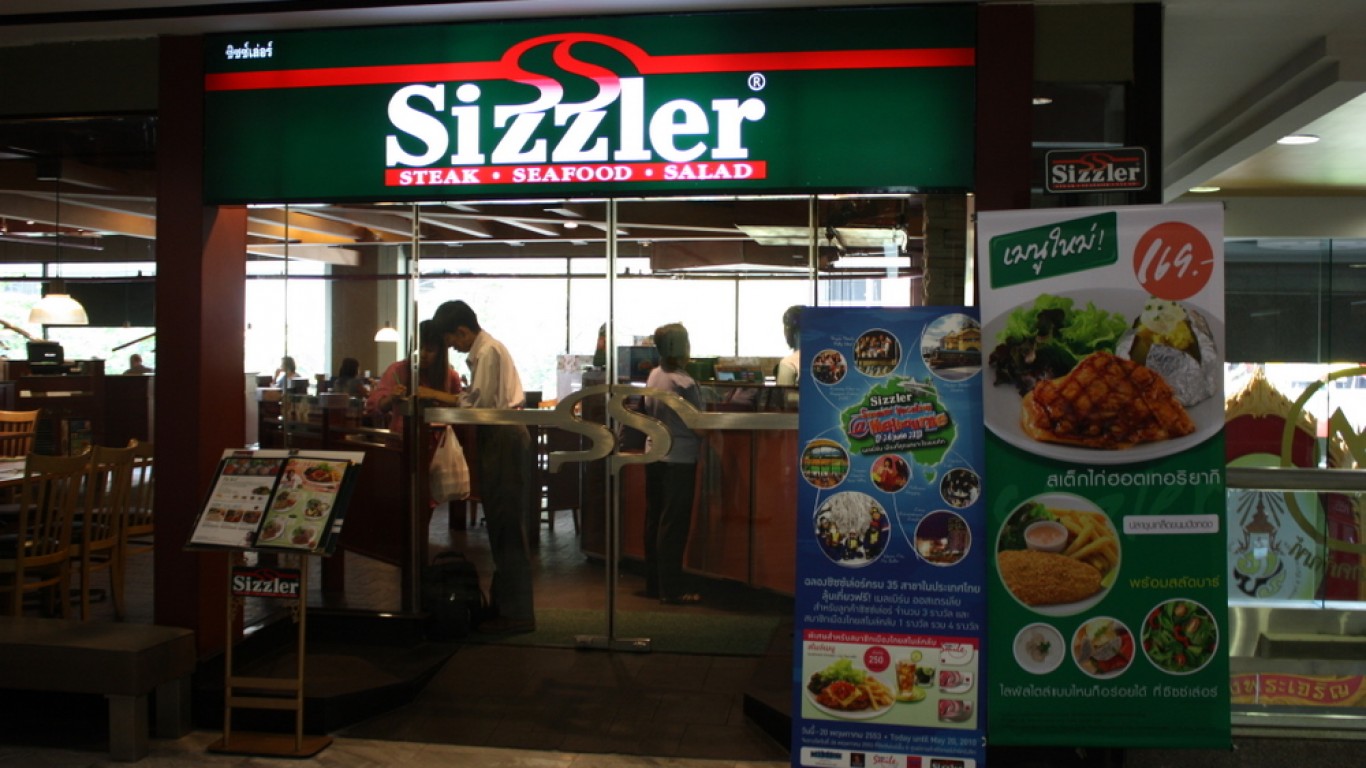
California is the world’s fifth-largest producer of food and other agricultural commodities, and by far the largest in the U.S. It is also a place known for its entrepreneurial spirit and creativity. Put those two factors together, and it’s hardly surprising that over the years the state has been the birthplace of some of the best-known food products and fast-food chains in the country and in some cases the world.
Taco Bell, Carl’s Jr., Baskin-Robbins, even McDonald’s are all California natives, but there are plenty more, from a high-quality ice cream brand found in supermarket freezers across the nation to a coffee roaster so influential that it inspired even Starbucks. (These are America’s favorite coffee brands.)
Click here to see 25 iconic food and drink brands born in California
Another native of the Golden State is George Geary, a cooking teacher and pastry chef and the author of numerous books including “The Cheesecake Bible” and “L.A.’s Legendary Restaurants.” His latest work, “Made in California: The California-born Burger Joints, Diners, Fast Food & Restaurants That Changed America,” tells the origin stories of some 50 California food and drink brands founded between 1915 and 1966, complete with historical photos and images of old menus and advertising materials. Some of these are among the most successful restaurant chains in America.
To assemble our list of 25 particularly iconic ones, 24/7 Tempo chose 21 of the nationally best-known brands from Geary’s book, drawing on his reportage and in some cases on corporate websites for additional information, and added four more famous brands founded in the Golden State after 1966, whose backgrounds we researched from various other sources.
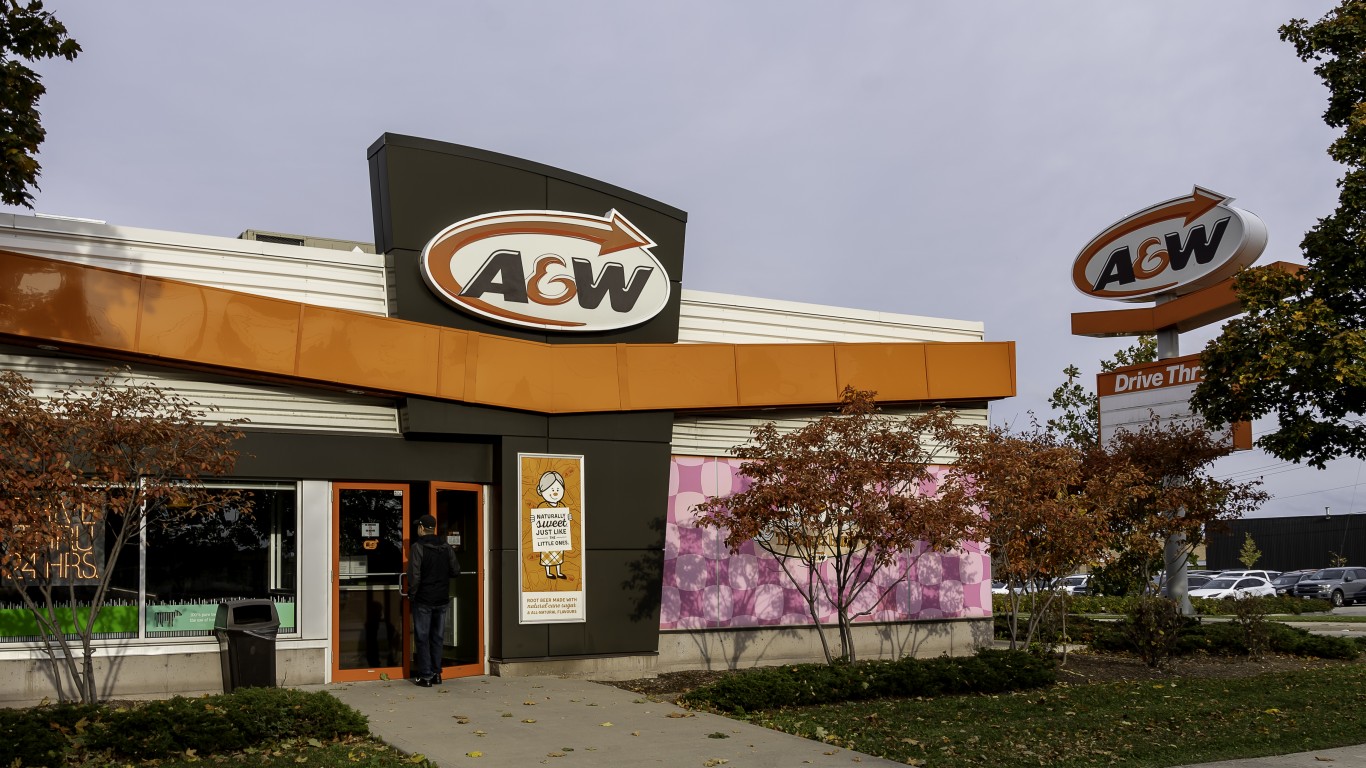
A&W Restaurants
> Year founded: 1919
> Original location: Lodi
> Original name: Root Beer
Roy W. Allen bought the formula for his root beer in Arizona and brought it back to his home in Lodi, in California’s Central Valley, opening a counter called simply Root Beer in 1919. One of his employees, Frank Wright, came in as a partner and they began opening a chain of stands with a name drawn from the initials of their last names. Their first restaurant, serving fast-food staples (burgers, etc.), appeared in 1923 in Sacramento, and the company grew into an international franchise operation.
[in-text-ad]

Baskin-Robbins
> Year founded: 1945
> Original location: Glendale
> Original name: Burt’s/Snowbird Ice Cream
In 1945, Irving Robbins, whose family had owned an ice cream store in Tacoma, Washington, opened his own place, Snowbird Ice Cream, in Glendale, just north of downtown L.A. Burton Baskin, who had married Robbins’ sister, subsequently launched an ice cream shop too, just east of Glendale in Pasadena. The two consolidated their operations in 1953, flipping a coin to determine whose name came first on the marquee. Noting that the East Coast Howard Johnson’s chain offered 28 flavors, they decided to list 31 — one for each day of the month.
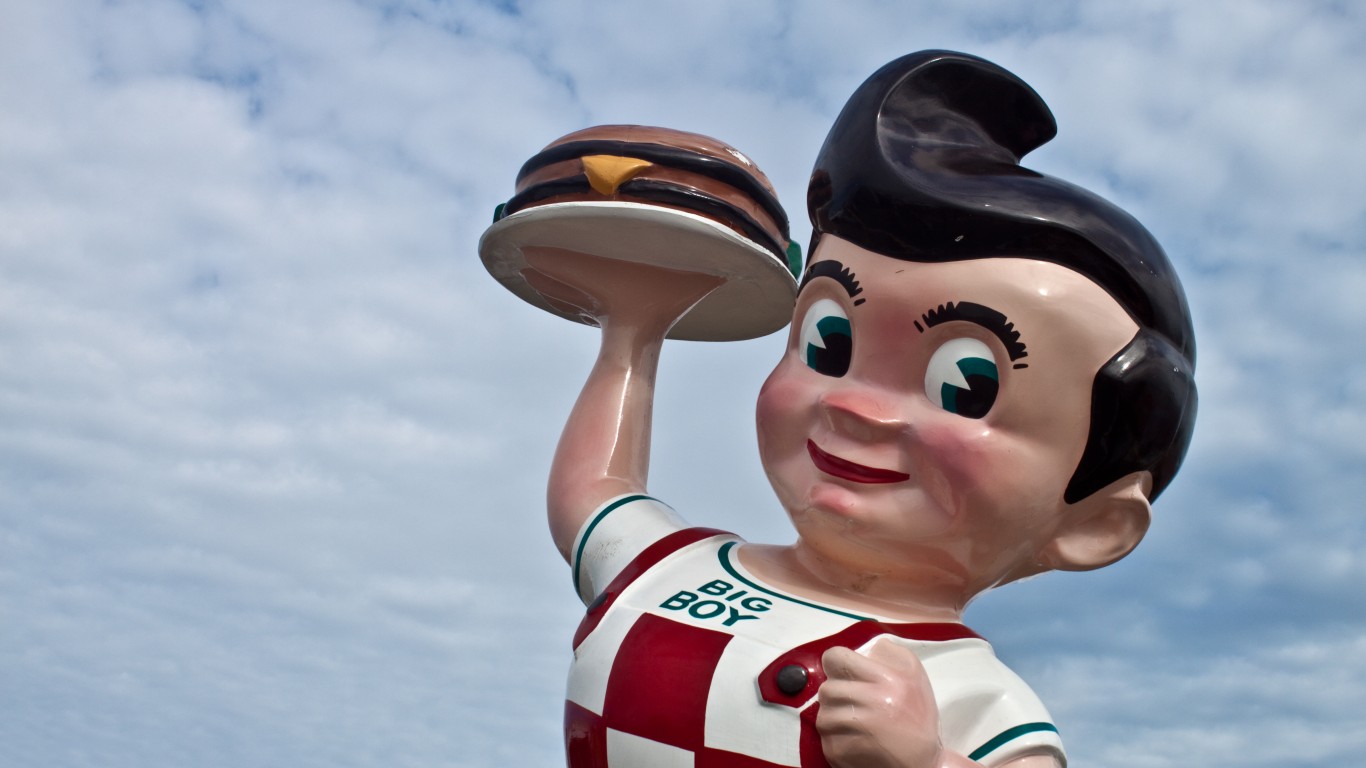
Big Boy Restaurants
> Year founded: 1936
> Original location: Glendale
> Original name: Bob’s Pantry
After Robert C. Wian sold his car for $300 and opened a burger stand he dubbed Bob’s Pantry in Glendale, a group of hungry musicians came in and asked for something bigger than the usual. He had the inspiration of cutting a bun into thirds instead of halves and inserting two patties instead of one, making the original double-decker burger. He christened the creation the Big Boy — later adopting the phrase as part of the restaurant’s name. The operation grew into a nationwide chain, but its fortunes have ebbed and flowed. Today, only a handful of Big Boy restaurants remain, but new owners of the trademark have promised a renewal of the brand.

California Pizza Kitchen
> Year founded: 1985
> Original location: Beverly Hills
> Original name: Same
A couple of L.A. attorneys, Rick Rosenfield and Larry Flax, who had been regular customers at Wolfgang Puck’s original Spago — which popularized California-style pizza with unconventional topping — hired Puck’s pizza chef, Ed LaDou, to develop recipes for a place of their own. It grew to a chain of 26 restaurants within seven years and continued to expand after PepsiCo bought a majority interest. Today owned by a private equity firm, the chain filed for Chapter 11 bankruptcy last year in the face of the pandemic, but continues to operate more than 250 units nationwide and in nine foreign countries.
[in-text-ad-2]
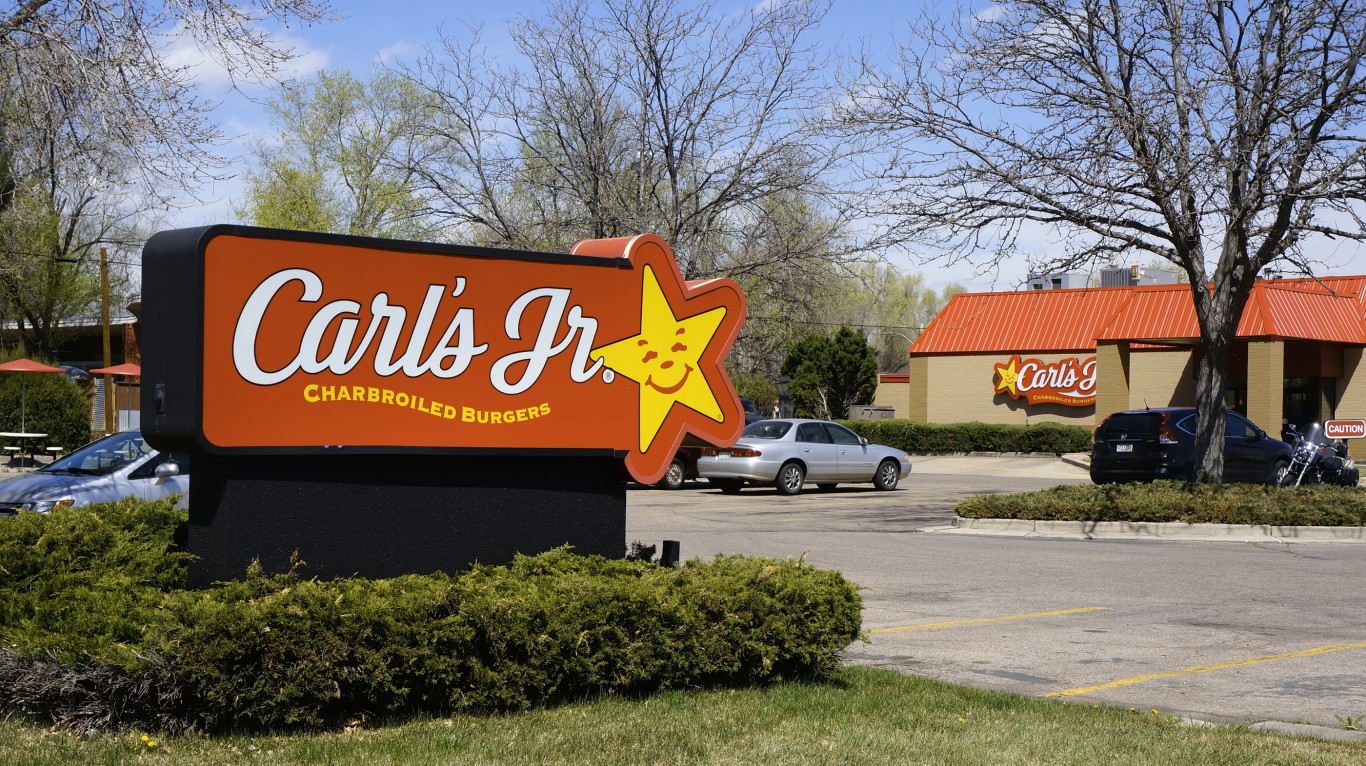
Carl’s Jr.
> Year founded: 1941
> Original location: Los Angeles
> Original name: The Blimp
Carl Karcher got his start in the fast-food business with a hot dog cart called The Blimp in downtown L.A., then moved to Anaheim and in 1945 launched a drive-in, where he served burgers for the first time. The first Carl’s Jr., conceived as a smaller counterpart to the original place, followed in 1956. A major expansion program ensued in 1968. In 1997, the chain’s parent company, CKE Restaurants, acquired 2,500 Hardee’s locations, whose units were in the Midwest, South, and East. Today, there are more than 3,600 CKE restaurants under both the Hardee’s and the Carl’s Jr. banners, with almost identical menus, in 44 states and 38 foreign countries and U.S. territories.

The Cheesecake Factory
> Year founded: 1978
> Original location: Beverly Hills
> Original name: Same
The original Cheesecake Factory was actually a cheesecake factory — a bakery specializing in cheesecake and other desserts, first in Detroit in the late 1950s and then in the San Fernando Valley. In 1978, David Overton, son of the original baker, opened a small cafe called The Cheesecake Factory in Beverly Hills with a menu offering little more than sandwiches and, of course, cheesecake. The concept expanded beyond Southern California and in 1993 The Cheesecake Factory went public. There are now more than 200 around the world.
[in-text-ad]
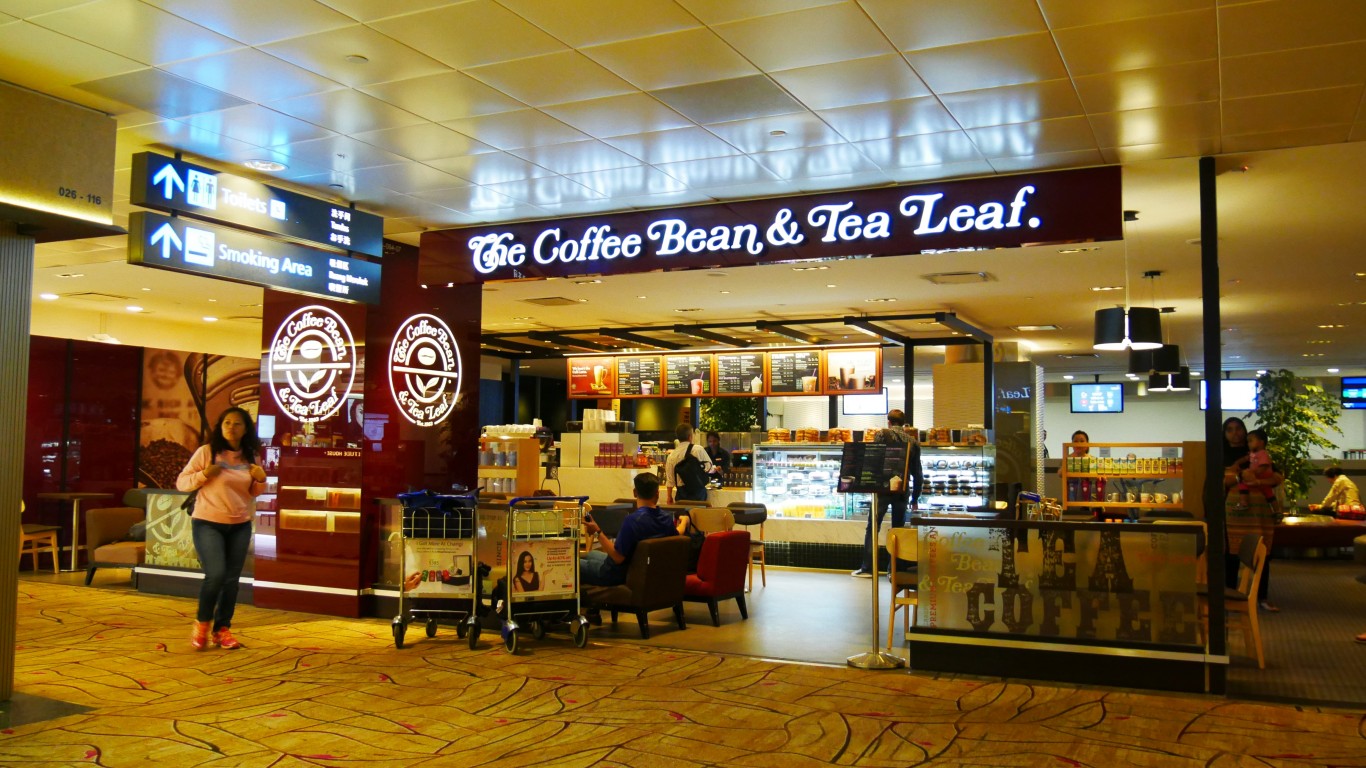
The Coffee Bean & Tea Leaf
> Year founded: 1963
> Original location: Brentwood (Los Angeles)
> Original name: Same
Eight years before the original Starbucks opened in Seattle, a UCLA student named Herbert Hyman launched the Coffee Bean & Tea Leaf as a company providing coffee service to offices. In 1968, after honeymooning in Sweden — where coffee is taken seriously — he decided to import and roast his own coffee, and opened his first store. By the mid-1970s, there were 10 stores around Southern California, but it really started to grow after an employee improvised a cold coffee-and-chocolate beverage that evolved into the chain’s popular Ice Blended drinks — predecessors of Starbucks’ Frappuccinos. Today there are more than 1,000 Coffee Bean and Tea Leaf locations in 27 countries.

Del Taco
> Year founded: 1964
> Original location: Yermo
> Original name: Casa Del Taco
When he got out of the Air Force in 1954, Ed Hackbarth got a job managing Bell’s Hot Dog Stand on the legendary Route 66 in San Bernardino east of Los Angeles. (Bell’s was co-owned by Glen Bell, who later created Taco Bell.) Hackbarth struck out on his own in 1964 with a taco and burger joint in the small Mojave Desert town of Yermo. It was a success, so he started expanding, bringing in one partner and then another, along the way dropping the “Casa.” By 1976, when the partners sold the operation, there were 50 Del Taco locations. Today there are 596 around the country.
Fatburger
> Year founded: 1947
> Original location: Los Angeles
> Original name: Mr. Fatburger
Restaurateur Lovie Yancey moved from Texas to Arizona and then to L.A., where she teamed up with a professional boxer named Charles “Suitcase” Simpson and in 1947 opened a three-stool stand which she called Mr. Fatburger — the idea being that the burger was so “fat” with condiments that it was a meal in itself. After she and Simpson parted ways, she lost the “Mr.” from the name, and in 1973 began to expand. She started selling franchises in 1981 (Magic Johnson, Janet Jackson, and David Spade were among the investors). Today there are 117 Fatburgers in 16 countries.
[in-text-ad-2]

Foster’s Freeze
> Year founded: 1946
> Original location: Inglewood
> Original name: Foster’s Old Fashion Freeze
“California’s Original Soft Serve” ice cream stop got its start in 1946 when George Foster bought the rights to develop Dairy Queen units around the Golden State. But he planned to serve low-butterfat ice milk and legislation sponsored by the California dairy industry banned him from using the term “dairy.” He named his operation after himself instead, originally selling just soft-serve, sundaes, and shakes, but soon adding burgers, hot dogs, and such. He expanded quickly, growing to 360 locations around California by 1951. Today, the chain has shrunken to just 67 units.
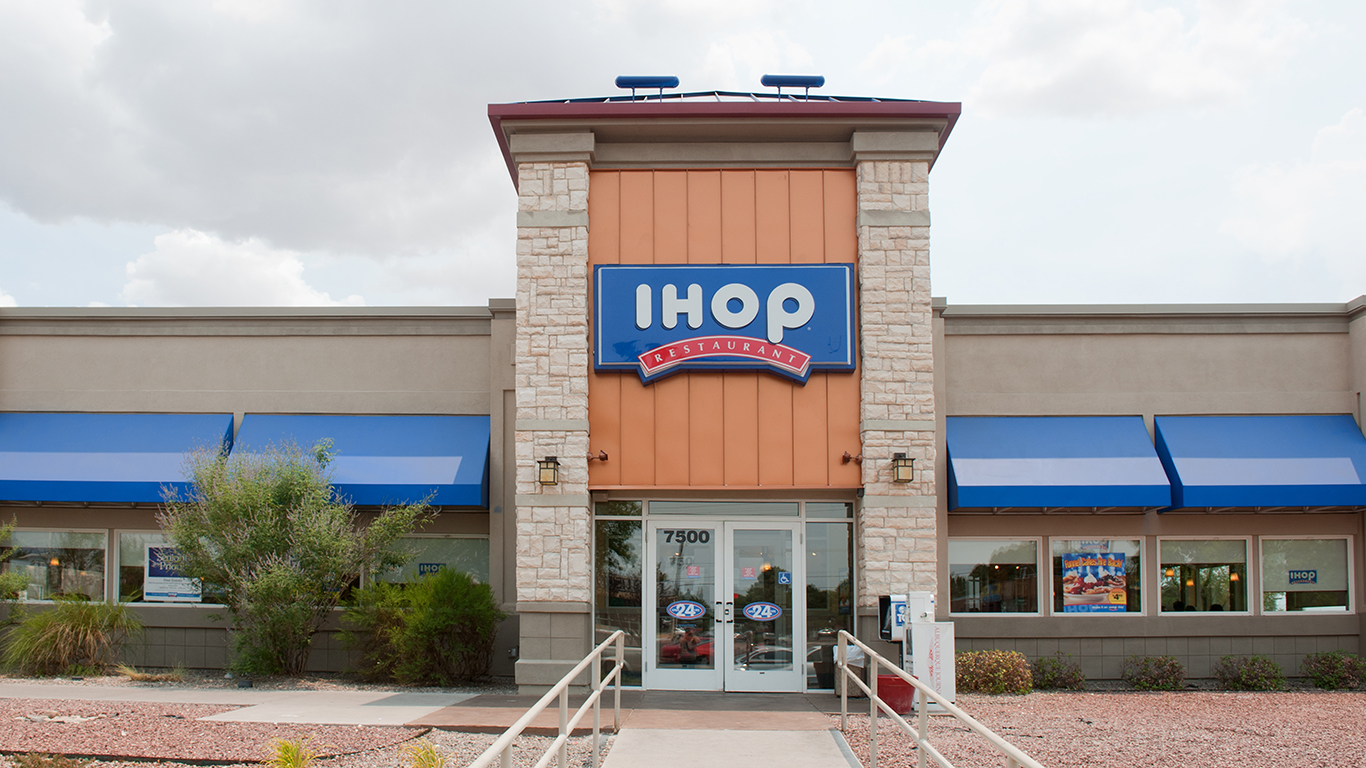
IHOP
> Year founded: 1958
> Original location: Toluca Lake
> Original name: International House of Pancakes
Al Lapin worked in the TV and movie business and had an office coffee-cart company on the side. One day, he and his brother noticed lunchtime lines in front of the local Bob’s Big Boy burger restaurant and thought that if he could duplicate the appeal of Bob’s for breakfast (which the burger place didn’t serve), he’d do very well. The brothers worked developing pancake and waffle recipes, and launched their business near Bob’s. Inspired by the then-familiar orange roofs of the Howard Johnson’s chain, they began building A-frame restaurants with vibrant blue roofs. With a greatly expanded menu and more than 1,800 locations in at least a dozen countries, IHOP — as it rebranded itself in 1973 — is by far the most successful pancake chain in the world.
[in-text-ad]
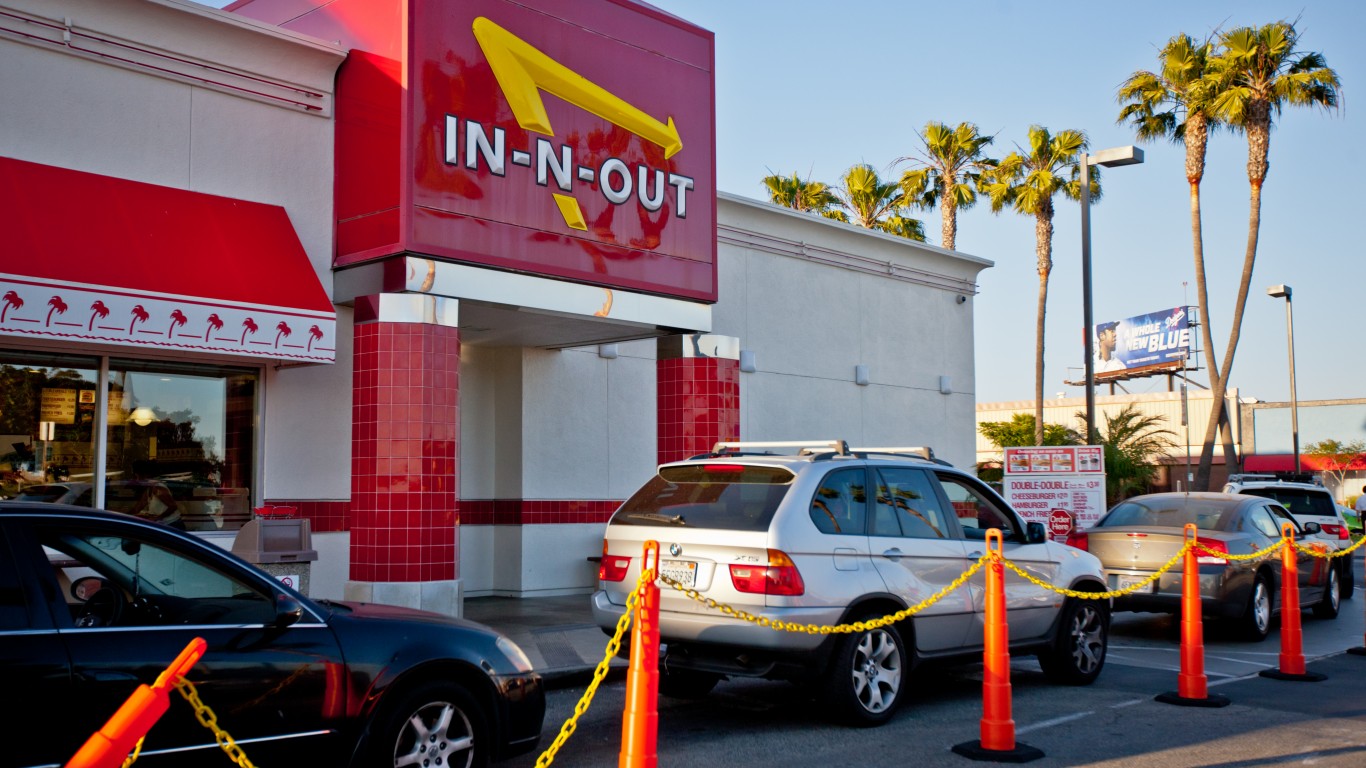
In-N-Out
> Year founded: 1948
> Original location: Baldwin Park
> Original name: Same
After working at a burger stand in Seattle, Harry Snyder moved to Baldwin Park in L.A. County’s San Gabriel Valley and opened one of his own there. He quickly turned it into an innovative drive-thru by building a two-way speaker which allowed customers to place their orders from the car and then pick up their food from a takeout window — unheard-of at the time. Snyder’s operation grew slowly, but by 1988 there were 50 locations around California. A cult grew up around the chain’s “secret menu,” with its own terminology well-known to regulars, and there are now more than 350 units in eight states.
Jack in the Box
> Year founded: 1951
> Original location: San Diego
> Original name: Same
Milkshake-machine salesman Robert Peterson opened several Topsy’s drive-ins in the San Diego area in the 1940s. Then he heard about a restaurant in Anchorage, Alaska, called Chatterbox, which used an intercom system to convey orders to the kitchen from customers in their cars. He bought rights to the system and converted the drive-ins to what he renamed Jack in the Box in reference to his new “chatterbox” system. Peterson expanded quickly, and today there are more than 2,200 Jack in the Box restaurants in 21 states.

Jamba Juice
> Year founded: 1990
> Original location: San Luis Obispo
> Original name: Juice Club
With some 718 locations in the U.S. (they’re in 37 states and territories, but more than half are in California) and another 150 or so internationally, this juice bar turned smoothie-and-sandwich store was first conceived as a senior project by Kirk Perron, a health-conscious business administration student at San Luis Obispo’s California Polytechnic State University. In 1995, Juice Club was renamed Jamba Juice — supposedly a variation on a Swahili word “jama,” meaning “to celebrate.” It remains the world’s most popular smoothie chain.
[in-text-ad-2]
McConnell’s Fine Ice Cream
> Year founded: 1949
> Original location: Santa Barbara
> Original name: Same
One-time health food store owner Gordon “Mac” McConnell and his wife, Ernesteen, started a business to produce European-style ice cream, free from artificial ingredients, in Santa Barbara. After Mac died unexpectedly when the enterprise was 13 years old, Ernesteen sold the company to Jim and Jeney McCoy, who moved operations to the historic Old Dairy in another part of town, which remains the company’s flagship to this day. While all seven McConnell’s shops are in California, the ice cream is sold in thousands of grocery stores all over America.

McDonald’s
> Year founded: 1940
> Original location: San Bernardino
> Original name: McDonald’s Barbecue
After running an ultimately unsuccessful movie theatre, brothers Richard and Maurice “Mac” McDonald opened a hotdog stand called The Wigwam in the San Gabriel Valley, later moving on to a drive-in they christened McDonald’s Barbecue further east. Soon they’d dropped the drive-in carhops and decided to focus on burgers, fries, and shakes. A salesman for the company that made milkshake machines, Ray Kroc, noticed that the McDonalds were buying a lot of them, a sign of success, and hired on as their franchise agent. He eventually bought out the brothers, and the rest is fast-food history. Today, McDonald’s is by far the largest restaurant chain in existence, serving burgers and more in about 120 countries and recording sales in the U.S. alone last year of almost $40 billion.
[in-text-ad]
Orange Julius
> Year founded: 1926
> Original location: Los Angeles
> Original name: Same
Orange groves used to cover much of Los Angeles, San Bernardino, and (obviously) Orange counties, but fresh orange juice wasn’t often sold until Julius Freed opened his juice stand in downtown L.A. An early customer, who found that straight orange juice upset his stomach, came up with a recipe for a milder beverage, using all-natural ingredients, based on the juice. Customers loved it, and the operation grew from a single unit to a hundred in three years’ time. Today, there are 396 around the U.S., with almost a quarter of those in Texas, with more internationally, and Orange Julius products are widely sold in supermarkets nationwide.
Panda Express
> Year founded: 1983
> Original location: Glendale
> Original name: Same
The largest Asian-themed restaurant chain in America, with over 2,200 locations, Panda Express grew out of a Chinese restaurant opened in Pasadena, California, in 1973 by a master chef named Ming Tsai Cherng and his son, Andrew. In 1983, the management company behind Glendale Galleria, a shopping mall one town over from Pasadena, asked the Cherngs to develop a fast-food version of their restaurant for their food court. It proved popular, and a second food court location opened at the Westside Pavilion in West Los Angeles two years later. In addition to its now-widespread U.S. presence, the chain also now has outposts in about a dozen other countries, mostly in Latin America and Asia.
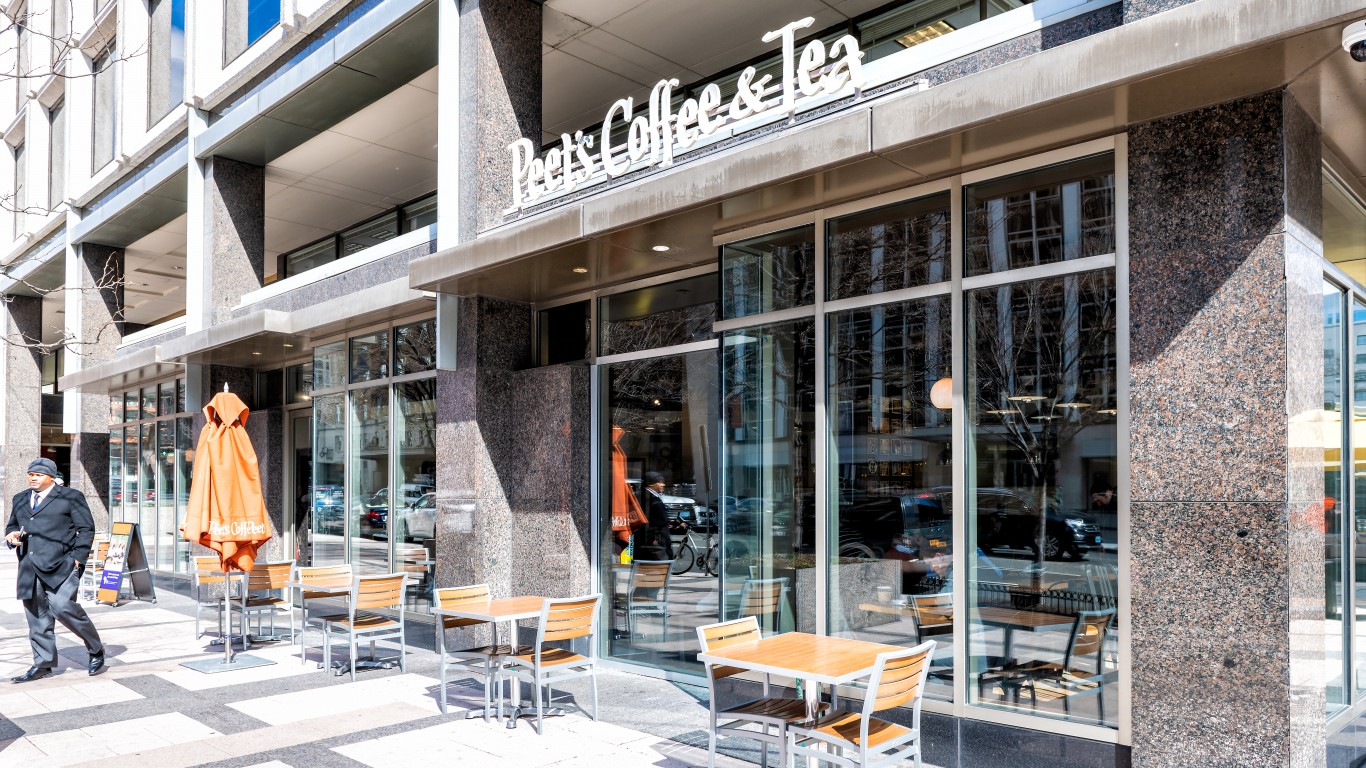
Peet’s Coffee
> Year founded: 1966
> Original location: Berkeley
> Original name: Peet’s Coffee, Tea and Spices
Known as “the Dutchman who taught America how to drink coffee,” Alfred Peet grew up helping out at his family’s small coffee roastery in The Netherlands, and later worked as a tea taster in Indonesia. When he moved to the San Francisco Bay Area in the 1960s, he was appalled by the quality of coffee he found, so opened a storefront in Berkeley selling coffee beans (roasted in-house), along with tea and spices. He taught countless acolytes — including the eventual founders of Starbucks — how to roast and brew coffee right. He expanded slowly, and in 1979, sold the company while remaining involved as coffee buyer. There are now about 340 Peet’s locations in the U.S., mostly in the West, and its beans are sold in an estimated 15,000 stores.
[in-text-ad-2]
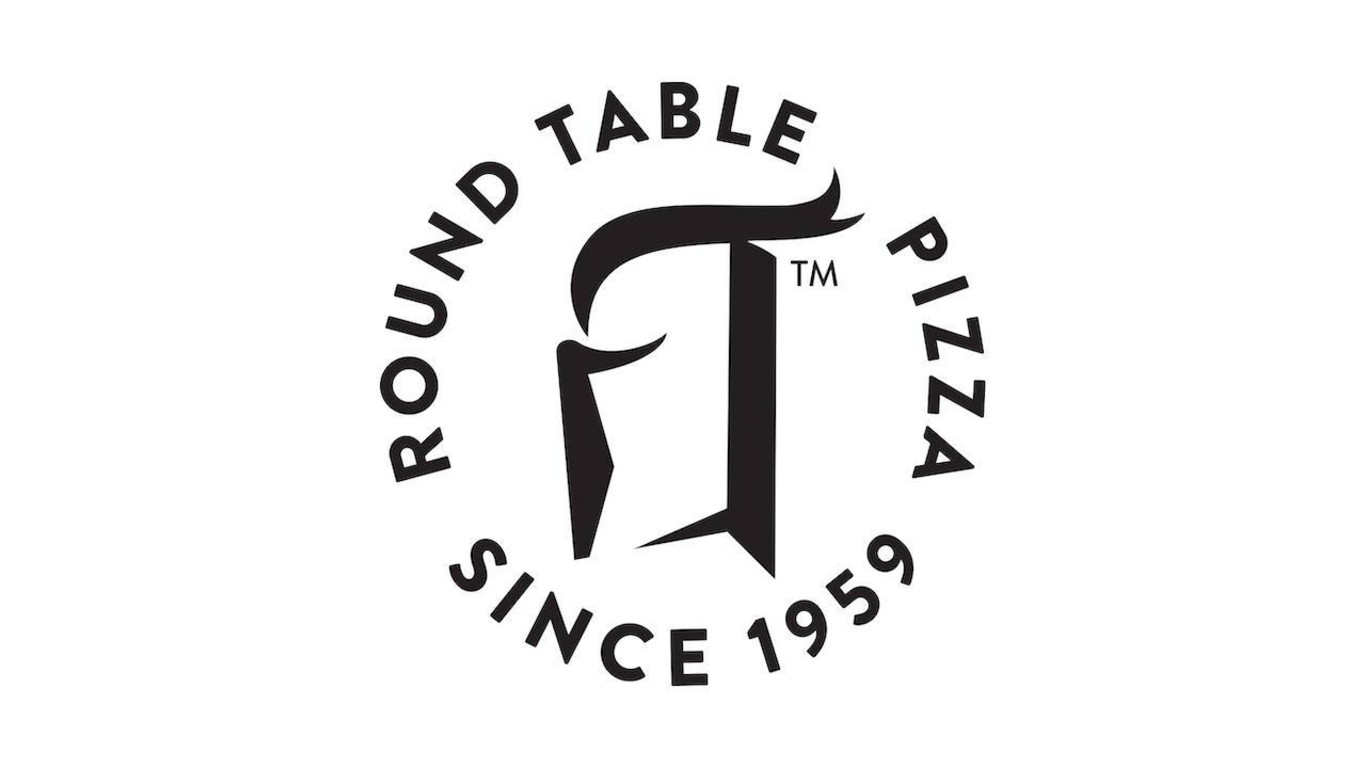
Round Table Pizza
> Year founded: 1959
> Original location: Menlo Park
> Original name: Round Table Pizza and Pub
After working for a couple of other pizzerias, William Larson went into the pizza business for himself, opening in the historic Waterworks Building in Menlo Park on the San Francisco Peninsula. He and his father built the restaurant tables out of redwood, installing a round one in the middle of the dining room — which gave the place its name. He began franchising in 1962 and subsequently sold the business. There are more than 400 locations around America today, mostly on the West Coast. According to a press release issued when a new owner took over in 2017, there are also 10 international locations — but in “Made in California,” George Geary reports that there is only one left today — in Mongolia.
Shakey’s Pizza Parlor
> Year founded: 1954
> Original location: Sacramento
> Original name: Shakey’s Ye Public House
Sherwood “Shakey” Johnson and his friend Ed Plummer opened a tavern in a former grocery store in the California capital, at first serving only beer, but soon adding pizza ovens and renaming their operation to its current moniker. Shakey’s became the first franchised pizza chain in the country. At one point, Shakey’s had about 500 locations in America and there were franchises in a number of foreign countries. Today, only about 50 remain in the U.S., almost all of them in California, but there are still more than 400 abroad.
[in-text-ad]
Sizzler
> Year founded: 1958
> Original location: Culver City
> Original name: Sizzler Family Steak House
Delmar Johnson, an ice cream salesman whose family had owned a restaurant in Illinois, read an article in 1957 about a steakhouse chain that offered complete steak dinners for $1.09 (around $10 today) and thought he could run a bargain-priced steakhouse himself. With his friend Jim Collins, who owned a burger stand, he and his wife opened the first Sizzler Family Steak House in their garage. He sold a top sirloin steak with potatoes for $1.19, and once a week offered a second one for a penny. Collins bought out the Johnsons in 1967, by which time there were 156 franchised locations plus four owned by the founders. When the pandemic hit, there were 270 locations in the western U.S., mostly in California, but in September last year the company filed for bankruptcy, and it’s uncertain how many will reopen.

Taco Bell
> Year founded: 1962
> Original location: Downey
> Original name: Same
Glen Bell was running a hot dog and hamburger drive-in when he noticed that diners were lining up to eat at a little Mexican place across the street, where the specialty was crisp-shelled tacos. He borrowed the idea and went on to open a three-unit operation called Taco Tia, then sold it and opened a taco stand called El Taco’s. In 1962, he went comparatively upscale, commissioning an architect to design a unique faux-Mexican-look restaurant (with walk-up service only), complete with Mission-style bell, that he dubbed Taco Bell. He began franchising the concept and by 1978, there were 868 Taco Bells. Today, owned by Yum! Brands (which also owns KFC and Pizza Hut), Bell’s concept has expanded to more than 6,000 restaurants in 26 countries.

Trader Vic’s
> Year founded: 1934
> Original location: Oakland
> Original name: Hinky Dink’s
Victor “Trader Vic” Bergeron ran an Oakland saloon called Hinky Dink’s, on whose menu the most exotic dish was Ham and Eggs Hawaiian (with bananas and pineapple). After a trip to Cuba, however, he began mixing rum cocktails at the bar, and after visiting a couple of South Seas-themed restaurants in Hollywood, he decided to add Chinese-inspired tropical dishes to the bill of fare. His wife suggested that he give Hinky Dink’s a new name, and because he loved to barter, he settled on Trader Vic’s. The original grew into a chain that defined the tiki bar (and restaurant) trend, with many outposts located in Hilton hotels. Bergeron began expanding internationally in 1963. Today, there are only three locations left in the U.S., but another 16 are thriving in Europe, Asia, and above all the Middle East.
[in-text-ad-2]
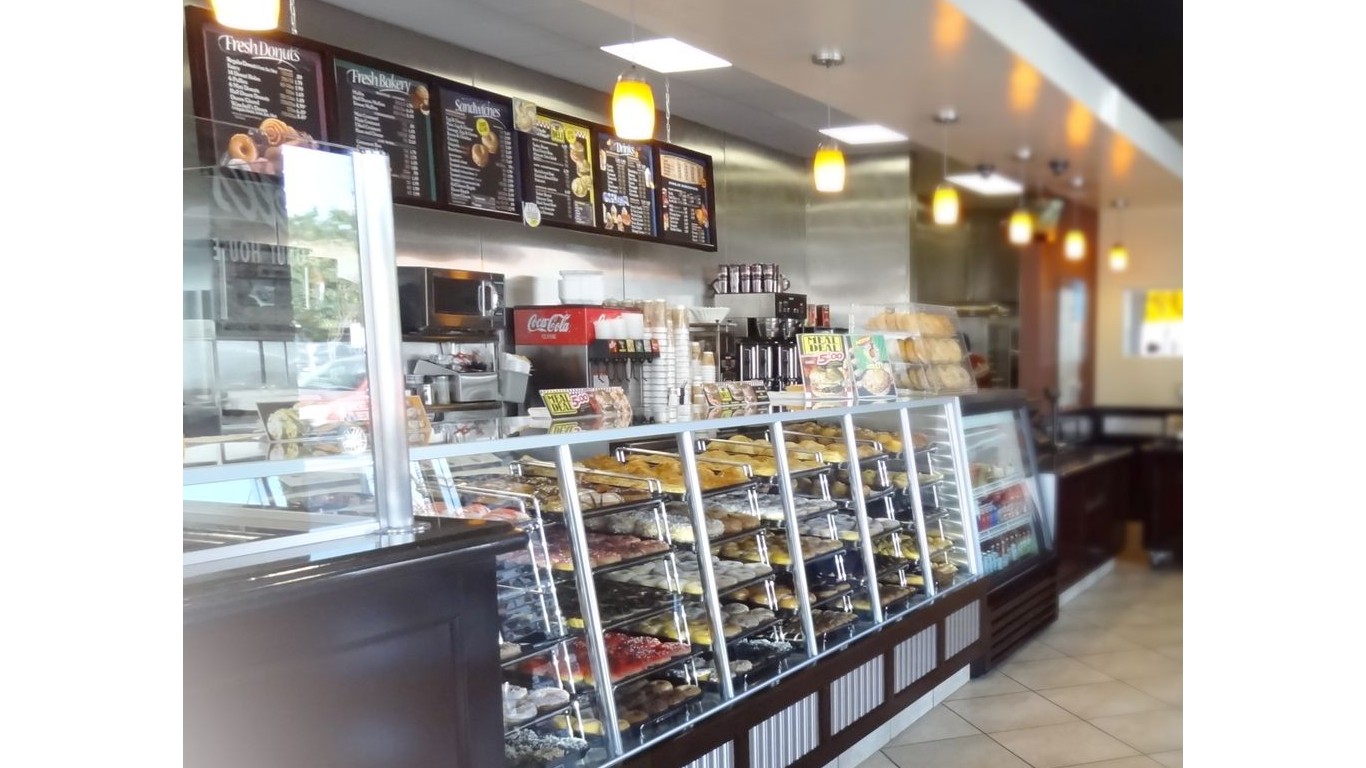
Winchell’s Donuts
> Year founded: 1948
> Original location: Temple City
> Original name: Same
After failing with a jukebox business and a used car lot, Verne Winchell decided to try his luck with a drive-thru doughnut shop. After opening a couple more stores, and introducing the “Winchell’s Dozen” — 14 doughnuts rather than the usual “baker’s dozen” of 13 that other purveyors sold — he launched his first “coffee room,” with tables for indoor dining. At first, Winchell stuck to California, but after the company went public in 1961, he expanded into Colorado and Arizona. There are now 104 Winchell’s, in five western states, Guam, Saipan, and Saudi Arabia.
Take Charge of Your Retirement: Find the Right Financial Advisor For You in Minutes (Sponsor)
Retirement planning doesn’t have to feel overwhelming. The key is finding professional guidance—and we’ve made it easier than ever for you to connect with the right financial advisor for your unique needs.
Here’s how it works:
1️ Answer a Few Simple Questions
Tell us a bit about your goals and preferences—it only takes a few minutes!
2️ Get Your Top Advisor Matches
This tool matches you with qualified advisors who specialize in helping people like you achieve financial success.
3️ Choose Your Best Fit
Review their profiles, schedule an introductory meeting, and select the advisor who feels right for you.
Why wait? Start building the retirement you’ve always dreamed of. Click here to get started today!
Thank you for reading! Have some feedback for us?
Contact the 24/7 Wall St. editorial team.
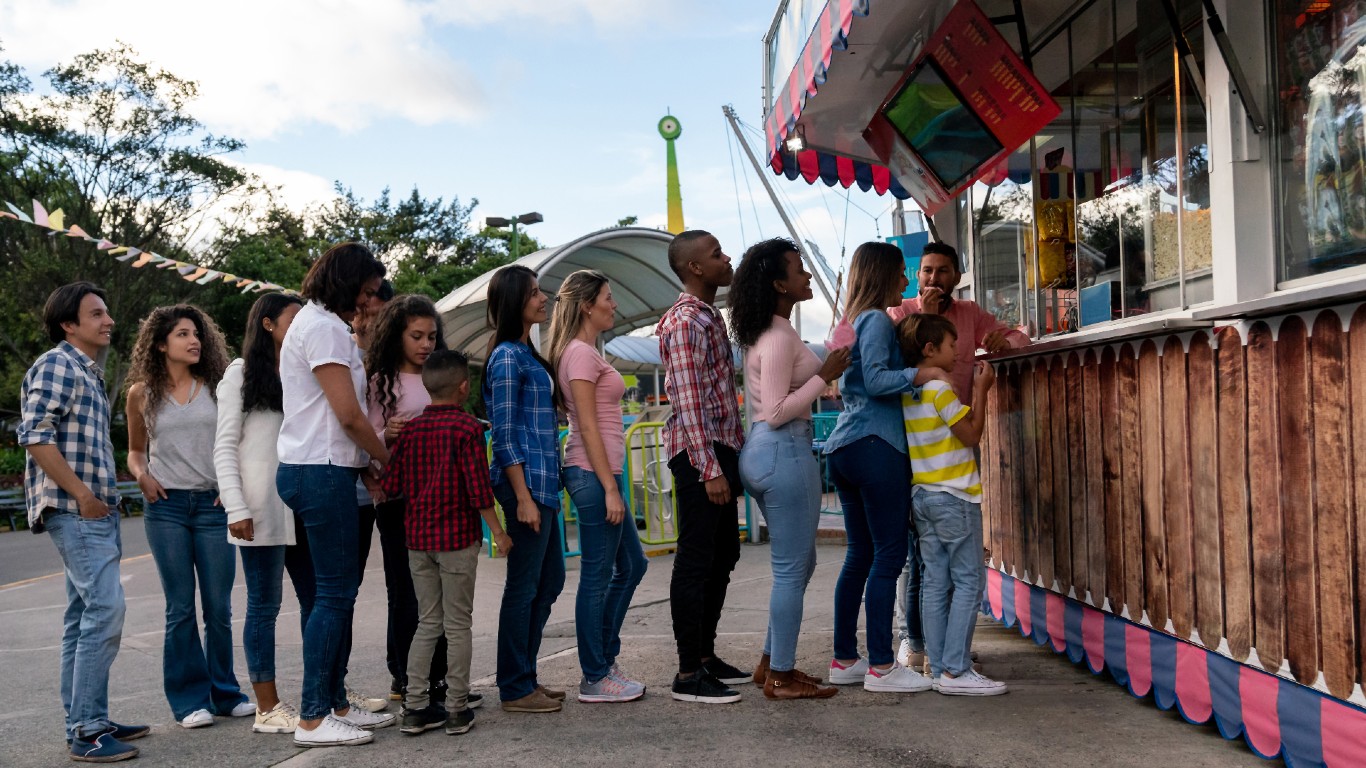 24/7 Wall St.
24/7 Wall St.
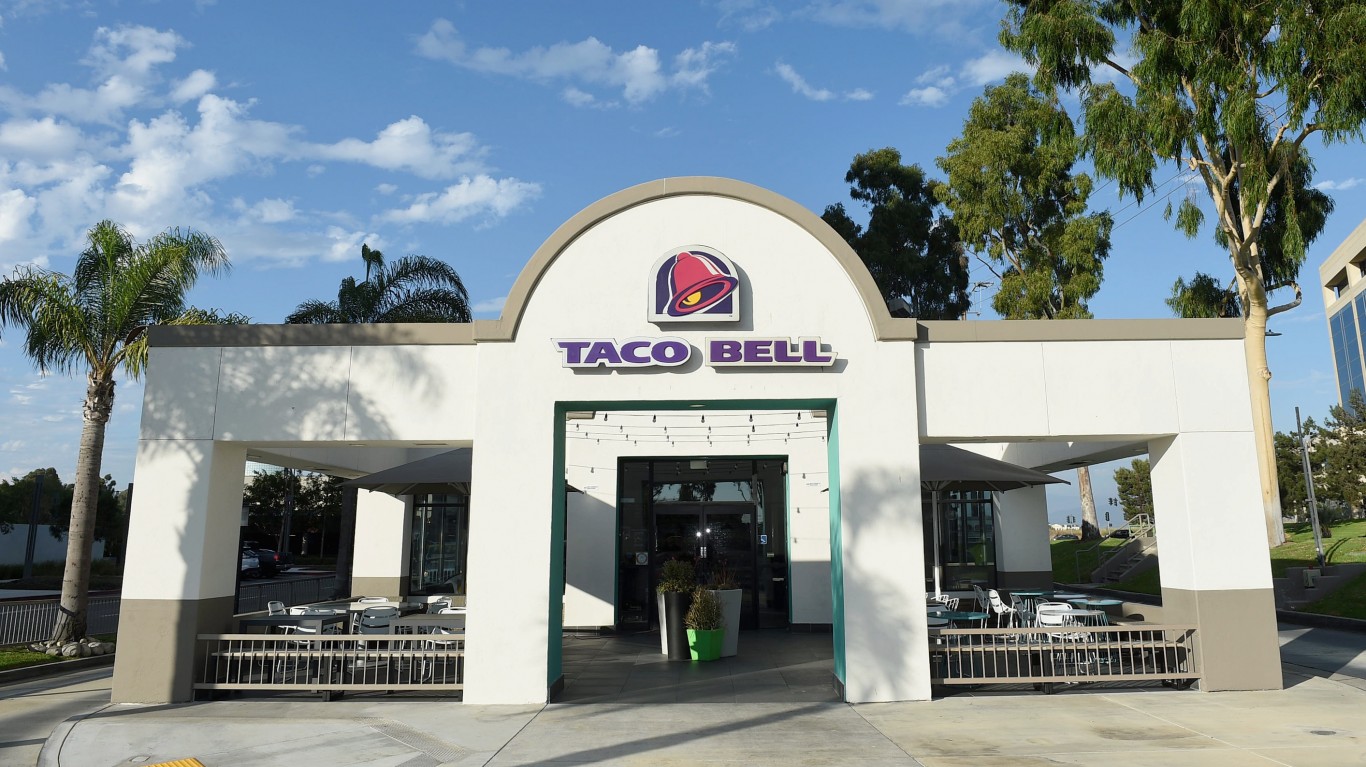 24/7 Wall St.
24/7 Wall St.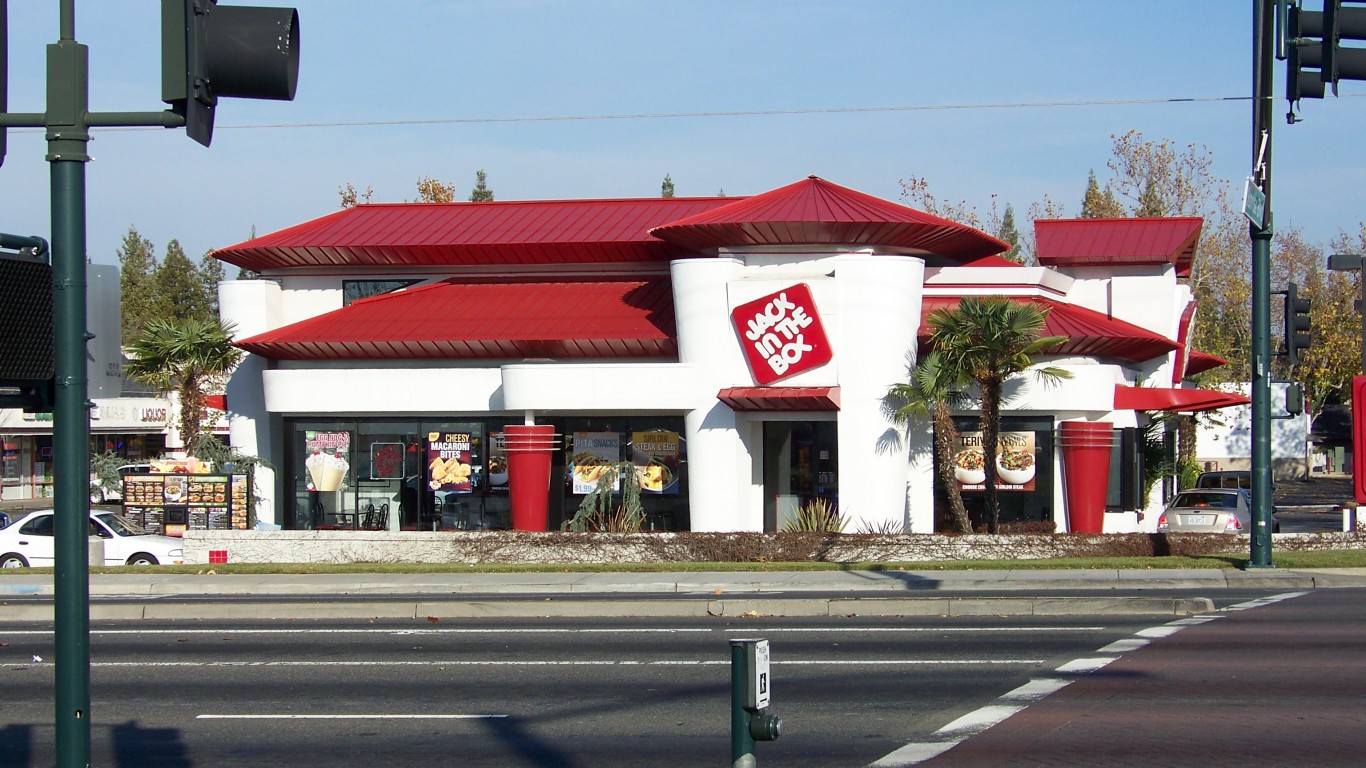


 24/7 Wall St.
24/7 Wall St.

